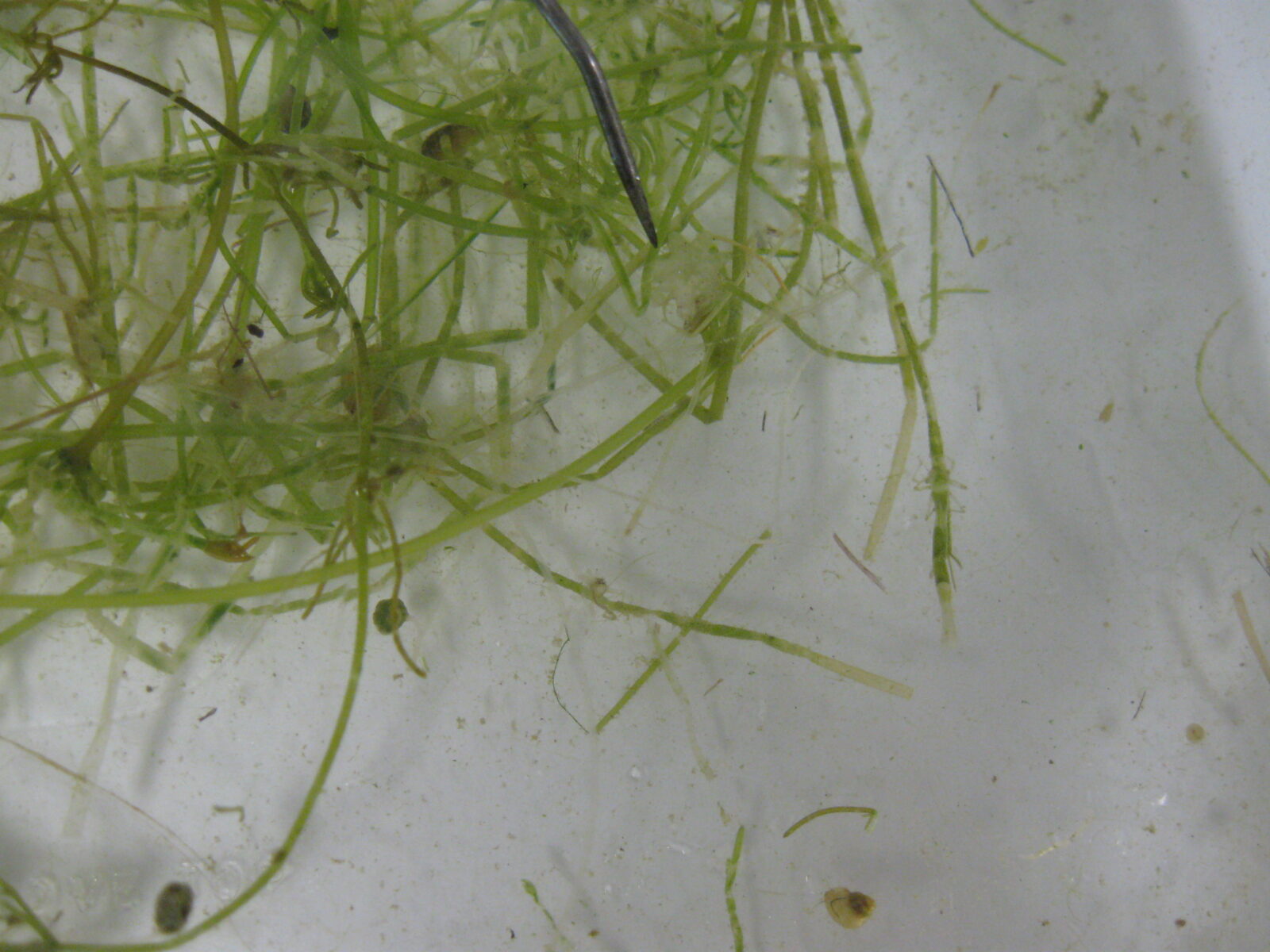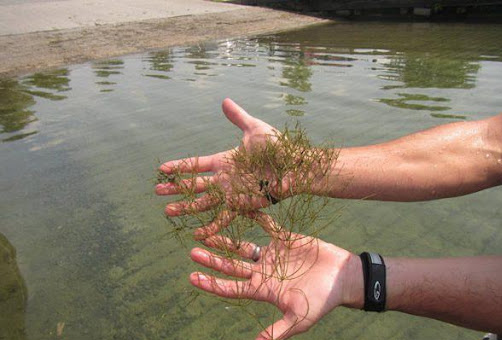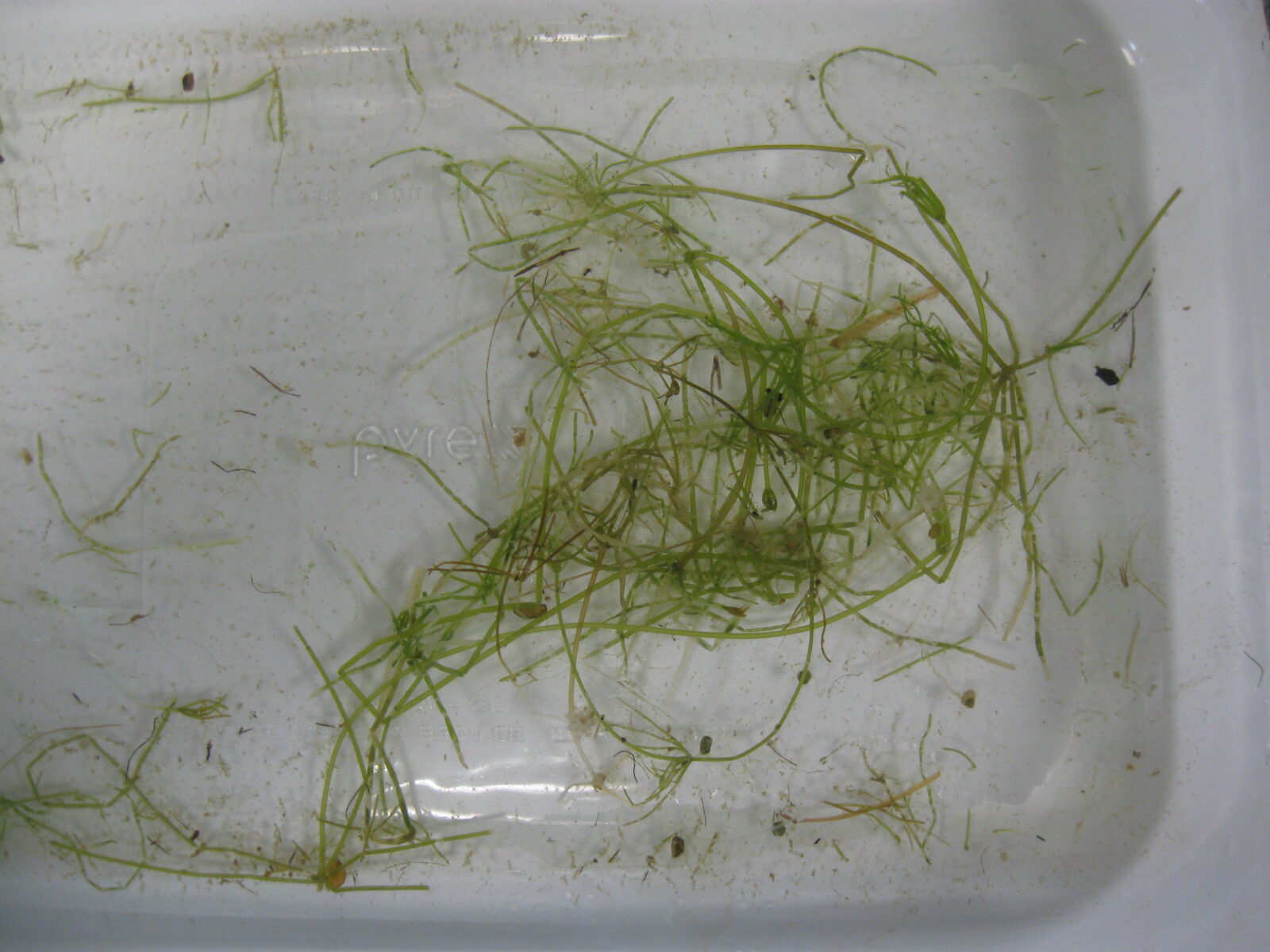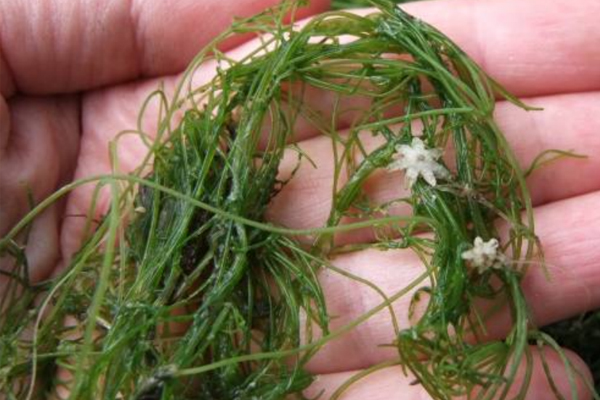
Starry Stonewort: An Example of Invasive Aquatic Algae
Invasive species can cause havoc on natural and manmade waterbodies including lakes, ponds, rivers, wetlands, and more. Even beyond blatantly impeding recreational activities like boating, skiing, fishing, and swimming, invasive aquatic weeds can be detrimental to water quality by raising nutrient levels, obstructing the introduction of oxygen, and disturbing native plant and wildlife species.
Starry stonewort (Nitellopsis obtusa) is one such invasive that has been found in lakes across parts of the Midwest. This is a macroalga that has plant-like structures and can grow in dense mats. In addition to the myriad of effects these dense mats can have on the recreational use of water, it also tends to choke out native plants.
What are the impacts of reduced native plants?
Without access to varied native plants, native wildlife populations face reduced foraging opportunities. These native wildlife populations often struggle to continue spawning and thriving, thus reducing species richness within an ecosystem.
Without local species diversity, ecosystems do not function and often fail to produce vital nutrients and other benefits to local wildlife, which may lead to further species die off. This disruption of ecosystem function could become irreversible and impair the waterbody for generations. Property values, recreational use, economic, and ecological benefits can all deteriorate without proper management of invasive species, especially starry stonewort.
Identification of Starry Stonewort
Unlike native stonewort, starry stonewort can grow with less light, within deeper and cooler waters, and tolerate salinity fluctuations.
The easiest way to identify starry stonewort is by its small star-like bulbils. It has 4-6 whorls around the stem and can expand up to two meters tall. It often grows in marl sediments and in 9 meters or more of water. Starry stonewort can also overwinter in some locations.
Where did starry starwort come from?
Starry stonewort originated in Eurasia and was transported to the United States by ballast waters – fresh or saltwater held in ship’s ballast tanks and cargo holds – in the 1970s. Since then, it has spread throughout the eastern United States, creating established populations throughout Michigan, Indiana, Minnesota, Wisconsin and Illinois.
Today, it still spreads easily, often via fragments attached to waterfowl feathers or small fragments transported via boats or fishing gear from waterbody to waterbody.
Why is starry stonewort considered invasive?
Starry stonewort is considered invasive because this algae spreads by fragmentation and creates dense mats that outcompete even other invasive species like Eurasian watermilfoil and curly-leaf pondweed. It spreads easily, often via fragments attached to waterfowl feathers or small fragments transported via boats and equipment from waterbody to waterbody.
Control and Prevention of Starry Stonewort
One of the most effective ways to protect your waterbody is through community-wide prevention – after all, it only takes one person to introduce starry stonewort into a waterbody.
Check boat motors and trailers, as well as recreational gear and water equipment for any fragments. Be sure to clean water intakes and drain all live wells before you leave a location. Once starry stonewort becomes established in a waterbody, early detection and chemical treatment are the most viable options for reducing its impact. While the use of chemical control in the form of algaecides can significantly reduce the biomass of macroalgae over time, its bulbils often remain viable for regrowth.
Without treatment or management, an ecosystem can become severely impaired. The financial burden of managing and restoring a waterbody after starry stonewort is established can affect maintenance strategies, property values, stormwater management, and recreational use.
Including a strategy for monitoring aquatic algae and vegetation within waterbodies can greatly increase the chances for early detection and management of starry stonewort. Resources for lake residents can also prevent the spread and slow the impact of invasive species at their lake. It is important to educate residents and lake users about the negative impacts that invasive species have on a waterbody.
Implementing an Annual Management Plan
Community prevention measures are essential, but professional monitoring is the last line of defense. Licensed lake and pond managers are able to keep track of your ecosystem at times when you can’t, allowing you to focus on other important responsibilities in your HOA, golf course, municipality, commercial business, or private property. The risks are too high to accidentally overlook signs of a starry stonewort infestation.
Contact SOLitude to begin designing your custom annual management program.
Prevent Algae & Weeds In Your Water
SOLitude Lake Management is a nationwide environmental firm committed to providing sustainable solutions that improve water quality, enhance beauty and preserve natural resources.
SOLitude’s team of aquatic scientists specializes in the development and execution of customized lake, stormwater pond, wetland and fisheries management programs. Services include water quality testing and restoration, algae and aquatic weed control, installation and maintenance of fountains and aeration systems, shoreline erosion control, muck and sediment removal and invasive species management. SOLitude partners with homeowners associations, golf courses, private landowners, businesses and municipalities. SOLitude Lake Management is part of Rentokil, a leading business services company, operating across the United States, Canada and Puerto Rico.
For more information, visit SOLitude Lake Management at solitudelakemanagement.com, and connect on Facebook, LinkedIn and Twitter.













